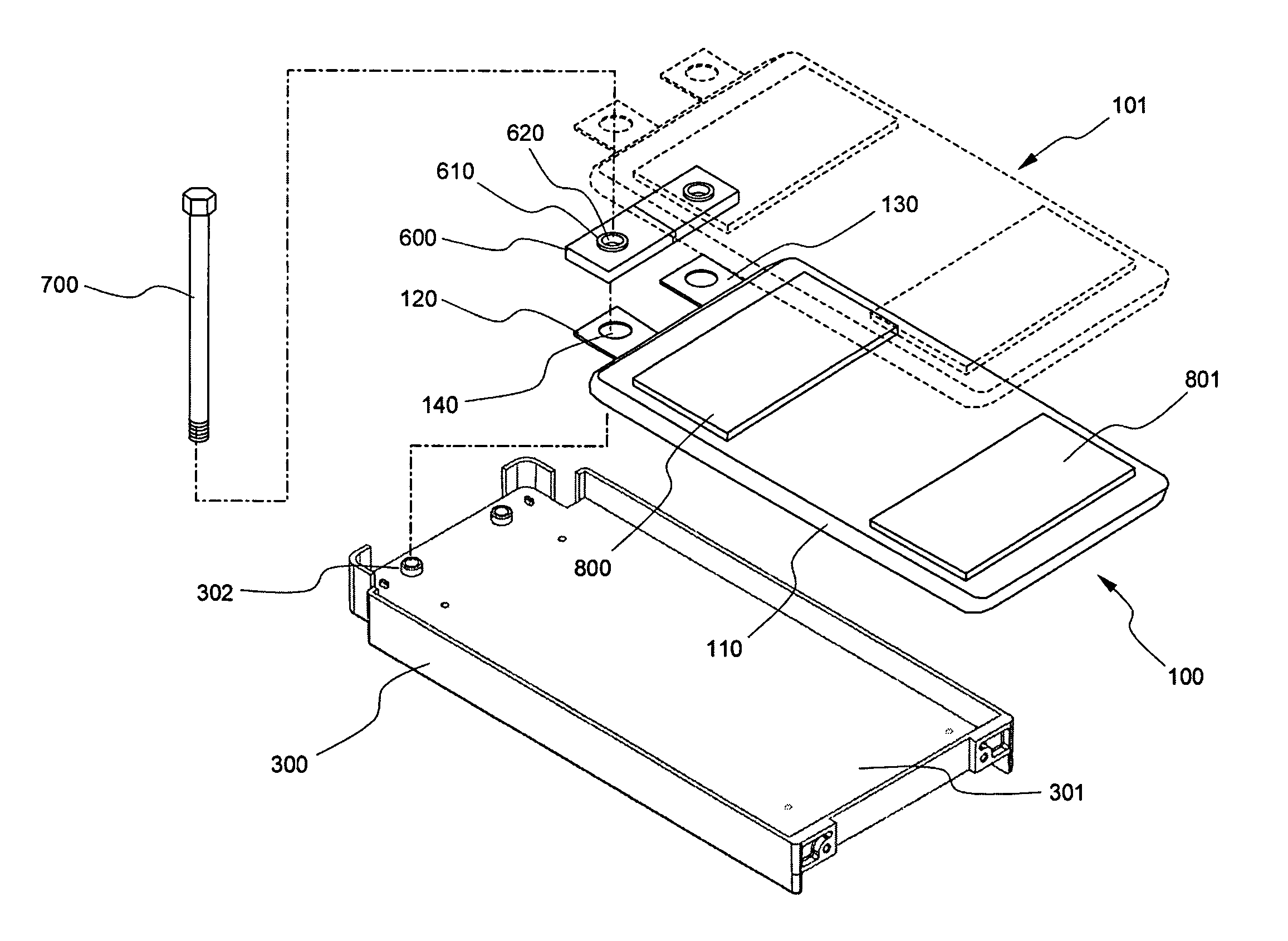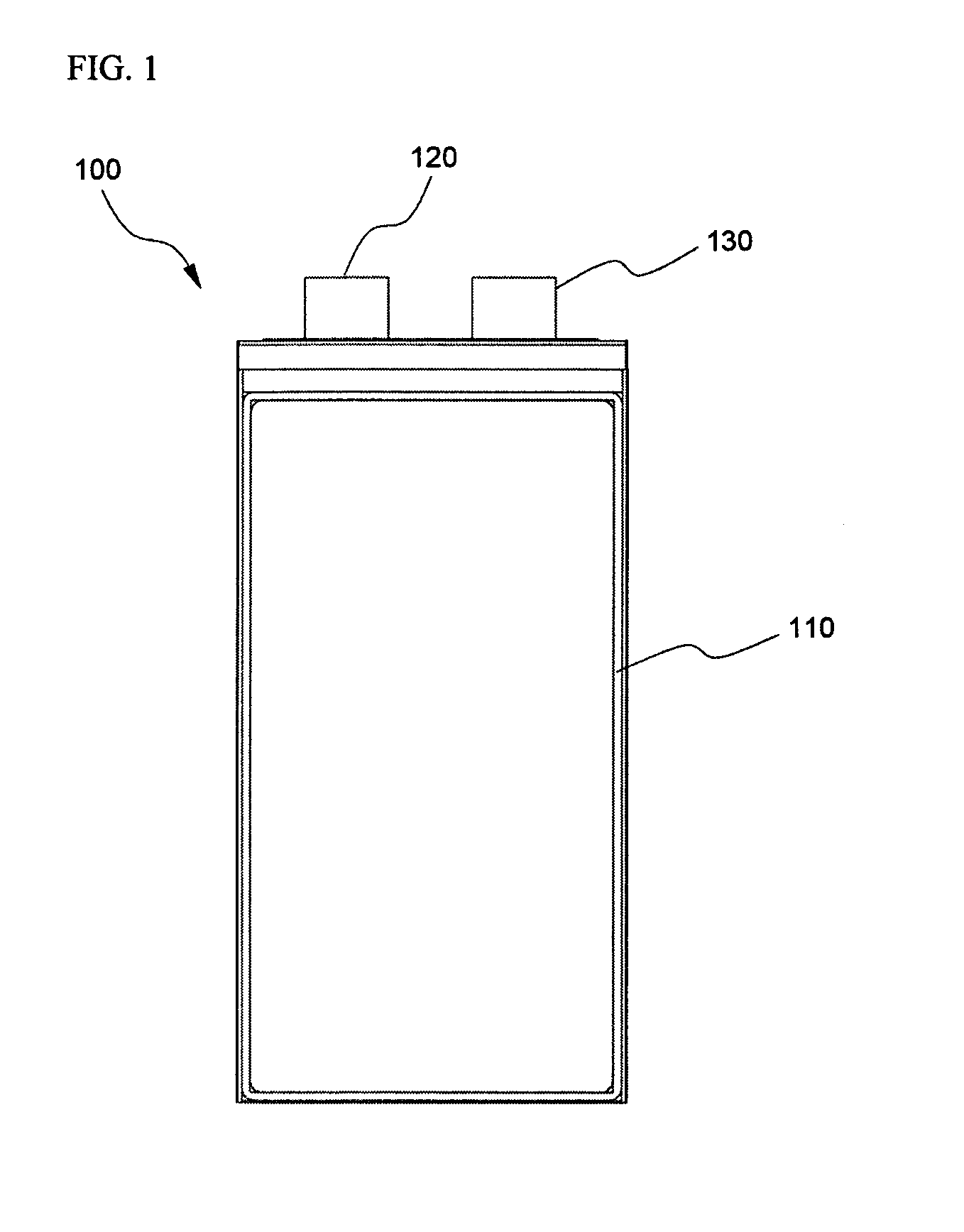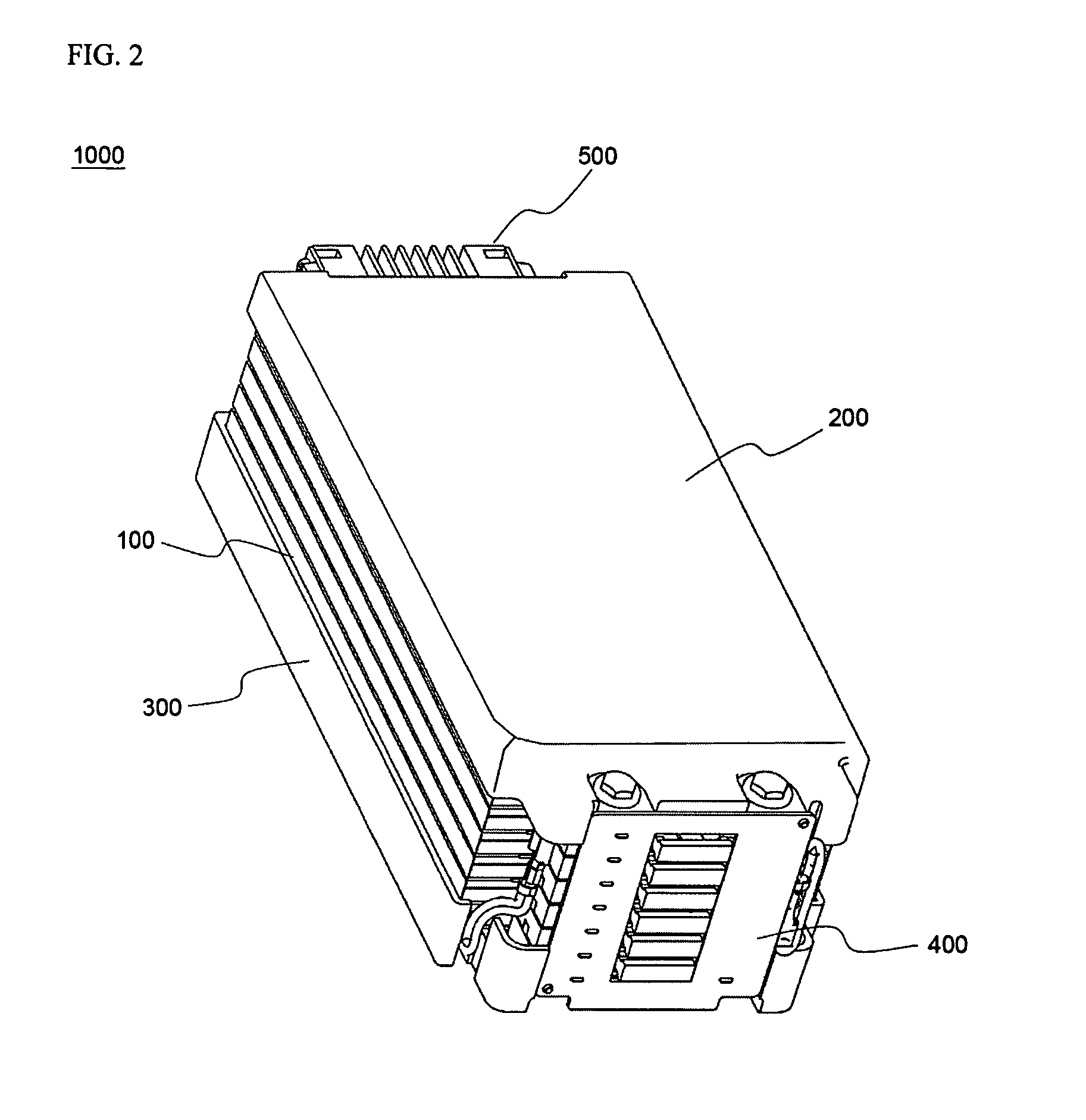Secondary battery module with exposed unit cells and insulation between terminals
a secondary battery module and terminal technology, applied in secondary cell servicing/maintenance, batteries, cell components, etc., can solve the problems of difficult manufacturing of structurally strong battery modules using a plurality of such cells, subject to a large number of external impacts and vibrations, and achieve the effect of effectively dissipating heat generated by unit cells and more stably stacked
- Summary
- Abstract
- Description
- Claims
- Application Information
AI Technical Summary
Benefits of technology
Problems solved by technology
Method used
Image
Examples
Embodiment Construction
Now, a preferred embodiment of the present invention will be described in detail with reference to the accompanying drawings. It should be noted, however, that the scope of the present invention is not limited by the illustrated embodiment.
FIGS. 2 and 3 are a typical perspective view and a typical side view respectively illustrating a battery module 1000 according to a preferred embodiment of the present invention.
Referring to FIGS. 2 and 3, the battery module 1000 includes an upper case 200, a lower case 300, a plurality of unit cells 100, a first circuit unit 400, a second circuit unit (not shown), and a third circuit unit 500. The unit cells 100 are stacked between the upper case 200 and the lower case 300, which are separated from each other. The first circuit unit 400 is mounted at the front surface of the battery module 1000, the second circuit unit is mounted at the lower surface of the battery module 1000, and the third circuit unit 500 is mounted at the rear surface of the ...
PUM
| Property | Measurement | Unit |
|---|---|---|
| voltage | aaaaa | aaaaa |
| current | aaaaa | aaaaa |
| temperature | aaaaa | aaaaa |
Abstract
Description
Claims
Application Information
 Login to View More
Login to View More - R&D
- Intellectual Property
- Life Sciences
- Materials
- Tech Scout
- Unparalleled Data Quality
- Higher Quality Content
- 60% Fewer Hallucinations
Browse by: Latest US Patents, China's latest patents, Technical Efficacy Thesaurus, Application Domain, Technology Topic, Popular Technical Reports.
© 2025 PatSnap. All rights reserved.Legal|Privacy policy|Modern Slavery Act Transparency Statement|Sitemap|About US| Contact US: help@patsnap.com



